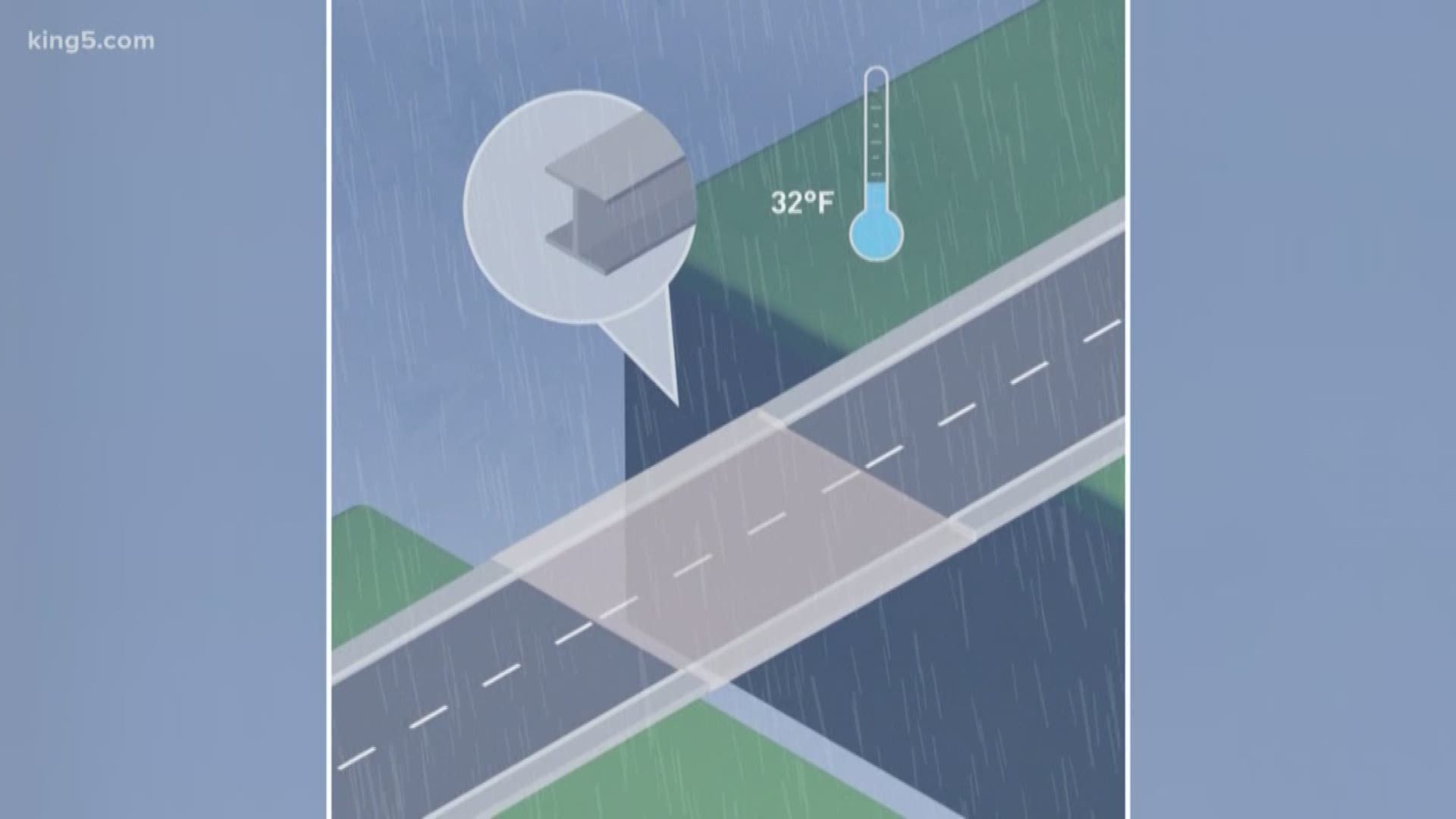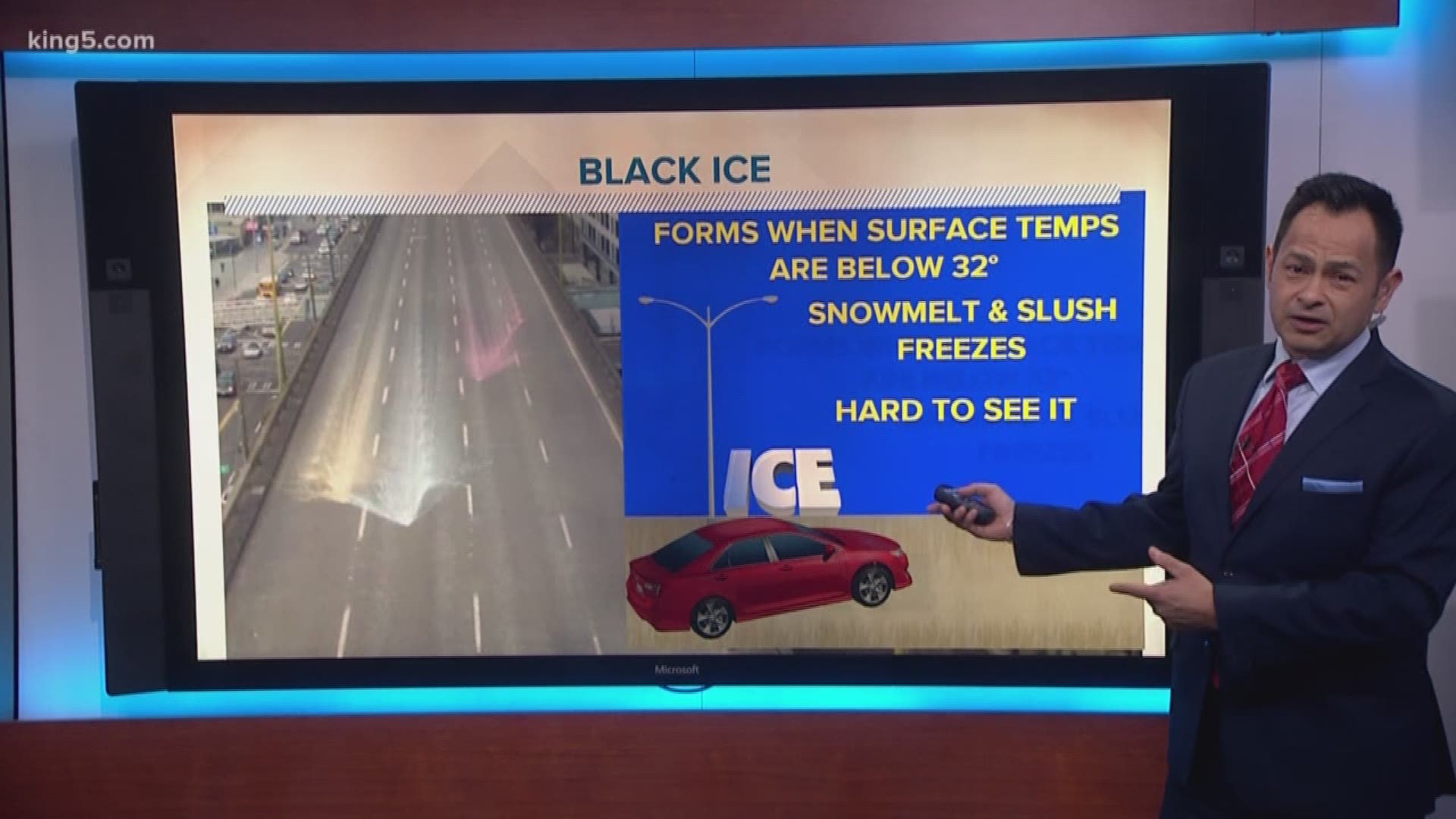Bridges and overpasses are often the most dangerous roadways to travel on when temperatures drop because they freeze before surface roads. But why is that?
Bridges, overpasses, or any elevated roads cool quicker because cold air surrounds it from all sides. Unlike surface roads, elevated roadways have no way to store heat and will ice over quicker when the temperatures drop below freezing.
Also, many bridges and overpasses are made from steel and concrete, which are good conductors of heat. This means the structure will easily lose heat because of the cold air surrounding it.
Also see | Tips for driving in the snow and ice
Asphalt, which most roads are made of, doesn’t conduct heat well. Roads on top of the ground retain more heat during freezing temperatures, therefore taking longer for the roadway to become icy.
Drivers should be cautious of black ice on both surface and elevated roads when temperatures drop below 32 degrees. It’s especially prevalent in the early morning hours when snowmelt has refrozen on surfaces overnight.
Also see | What is black ice?



